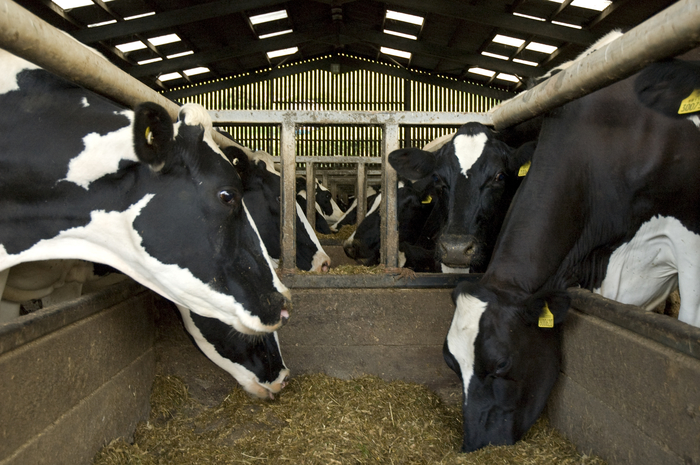With dairy farmers facing a challenging winter, the latest silage results from Trouw Nutrition GB suggest that while forages made are generally good quality, quantity will be the major issue.
Announcing the latest results for first and second cut grass silage and for fermented wholecrop at the UK Dairy Day, Dr Liz Homer, Ruminant Technical Development manager says that while the headline figures are encouraging, diets will need careful balancing to make the most of the available forages.
“The averages for over 3200 first cut silages and 1300 second cuts show generally good quality forages (see table) with typical dry matter, energy and protein contents. On average farmers have been able to make good quality forage despite the difficult season.
“We have seen an increase in wholecrop samples analysed this year, which ties in with reports that more cereals were preserved in this way. In general wholecrops are drier than usual reflecting the season and will be a useful component in diets.
“For both grass and wholecrop there is a considerable range in analysis, meaning it is essential farmers get their own forages sampled to know the quality of feed in their clamps.”
Dr Homer says that with forage stocks tight on many farms it will be crucial to ensure that the full feed value is exploited and warns this will require careful balancing.
While the headline analyses are good, she explains that it is important to understand how forages will perform in the rumen. She says that grass silages have a good level of Rumen Fermentable Carbohydrates and are high in Total Fermentable Carbohydrates (TFC), which leads to a high acid load, coupled with a lower than usual fibre index for forages. Wholecrop has lower TFC but also a lower fibre index, while fermentability and starch levels need to be considered to ensure acid load maximums are not exceeded in the total diet.
“These will affect how forages will perform in the rumen and mean they will require precise supplementation, particularly if forage intakes are restricted. Typically diets will contain 10-12kgDM from forage. This year this would be worth M+9 litres if the average silage is fed. However, if due to reduced stocks only 6kgDM from forage are available, then only maintenance will be achieved from forage, meaning every litre will need to be produced from purchased feed.
“It will be vital to balance rumen health and nutrient supply. For example, many feed suppliers are offering forage extender blends this autumn. While these will help improve fibre levels and rumen fill, it will be crucial for nutritionists to balance nutrient supply in the total ration.”
Dr Homer says it will be essential to assess available silage stocks carefully and then to formulate diets that allow forages to produce to their potential. She says supplementary feeds need to be selected based on how they perform in the rumen to ensure silage is correctly complemented. If diets contain more concentrates it is likely the overall diet may be too dry which can reduce intakes and increase the risk of sorting, so consider adding water to achieve the target 50%DM.
“Once the diet has been formulated, focus on management to ensure cows have the opportunity to make the most of the diet. Factors such as trough access, preventing sorting and regular pushing up of feed will all help cows perform this winter.”
| Nutrient | First cut grass | Second cut grass | Wholecrop |
| Dry matter (%) | 32.4 | 37.5 | 45.8 |
| Crude protein (%DM) | 15.4 | 16.6 | 8.7 |
| D value (%) | 68.9 | 67.5 | 66.3 |
| ME (MJ/kgDM) | 11.0 | 10.8 | 10.3 |
| NDF (%DM) | 46.4 | 46.3 | 41.4 |
| Lignin (g/kgDM) | 27.9 | 27.9 | 50.9 |
| Starch (%DM) | 24.6 |


